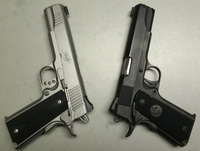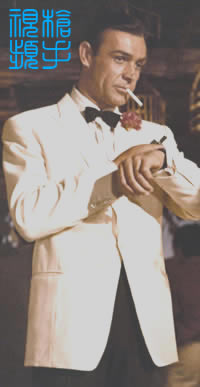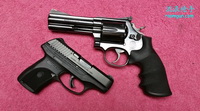Bill Ruger’s original creation returns in a superb heavy barrel redux.
网络文摘
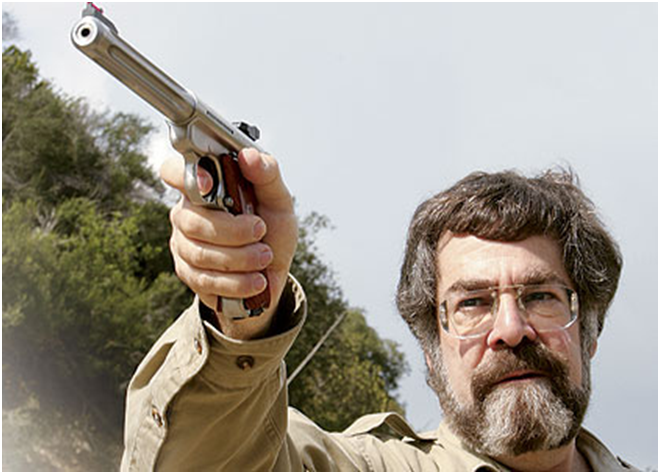
The author draws a bead with Ruger’s new Mark III. Note the crowned muzzle and HiViz front sight.
The late Bill Ruger built his handgun empire using the adjustable-sighted Mark I Target Pistol as the foundation along with a fixed-sight Standard Model, both of which were introduced in 1949.
The solidly built Mark I remained in the line until 1981 when it was succeeded by the Mark II, which incorporated an automatic bolt lock after the last shot was fired. Since then, there has only been room for the most subtle of variations.
But now, just when it seems that this 56-year-old classic .22 can’t get any better, Sturm, Ruger & Co. has introduced the new Mark III Hunter, its best-balanced and most attractive semiauto yet.
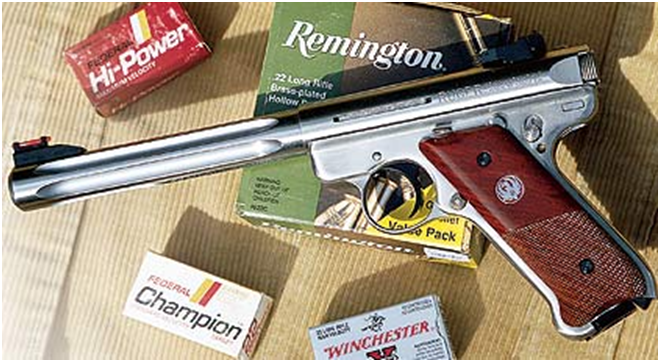
The Ruger Mark III Hunter was tested with a variety of .22 Long Rifle ammo, some old and some new. The gun functioned flawlessly with all brands.
The elegant, nonreflective, matte-finished stainless steel Mark III with the reddish mahogany contrast of its semicheckered cocobolo grips is attractively showcased in a fitted hunter-green protective case. The gun comes with six interchangeable fiber optic green-and-red front-sight “LitePipes,” a stainless steel Weaver-style scope-base adapter, a key and a spare for locking the gun’s action, and a separate gun lock. Oh yes, two 10-round magazines are included, along with an operating manual and the obligatory (for some states) fired casing.
The cosmetic and mechanical improvements of the Mark III Hunter are readily apparent. Most dramatic is the gun’s 6 7/8-inch, full-fluted bull barrel with its target-crowned muzzle. The graceful, “Buck Rogers”-style fluting is not only attractive but practical; it brings the semiauto’s weight down to 41 ounces, making it the lightest of the current Mark III heavy-barreled offerings.
The day-glo fiber optic HiViz front sight can be easily replaced with any of the inserts provided, although I stuck with red as being the most practical. The rear of the receiver is scalloped inward and tapers into the serrated bolt tabs, which makes manually cocking the gun much easier than in past models.
A loaded-chamber indicator bar lies flush within the left side of the receiver; one end pops out when a cartridge is chambered so that the indicator can be felt as well as seen. The top of the receiver is drilled and tapped for affixing Ruger’s separate scope mount, although I saw no reason to hinder this sleek gun’s appearance–or balance–with a scope.
The Ruger Mark III Hunter

(Left) The loaded-chamber indicator bar lies flush in the left side of the receiver and pops out when a cartridge is chambered. Also note (going clockwise) the bolt-release catch near the top front of the grip panel, the manual safety near the rear of the frame and the magazine-release button on the frame just opposite the Ruger medallion on the grip. (Right) With the bolt open and the gun put on Safe, the key can be inserted in the lock on the frame and turned 180 degrees to make the action inoperable.
To be sure, the practical range for this little gem is anywhere between 15 and 25 yards, and to prove my point I took it out to Angeles Shooting Range, along with a variety of .22 Long Rifle ammunition– some old, some new. The Mark III Hunter quickly became the center of attention for anyone who happened by my shooting station. Seems there had been a lot of rumors about Ruger’s pending introduction of its new Mark III, but no one had yet seen one.
As my fellow shooters stood by and watched, the gun did not embarrass me as I put more than a few holes in 15- and 25-yard targets. Ruger’s new microadjustable wide-V rear sight (click-adjustable for elevation, drift-adjustable via a dovetailed slot for windage) and the day-glo fiber optic front sight made getting a sight picture almost instantaneous. This became dramatically evident halfway through my shooting session, when a cloud bank rolled in and the day suddenly went gray. But the front sight still sucked up all the light needed to maintain a highly visible bead that almost glowed as it settled in the rear sight. There was a scant 3/32-inch takeup travel with the comfortably curved, serrated trigger, which then broke cleanly at three pounds, 10 ounces.
My test gun was perfectly zeroed in right out of the box. My first shot punched a hole at 6:30 right on the 10-ring circle, and my next shot was touching it. I had originally planned to shoot a five-shot group, but I was having so much fun that I ended up emptying the 10-shot magazine into the target, shooting offhand. My first five shots produced a 5/8-inch cluster, but by popping off another five rounds, I ended up with a one-inch group. After a little new-gun stiffness, the Ruger functioned flawlessly throughout the day.
Although it is called the Mark III Hunter–and it is certainly up to that task for any manner of small game–I also see this as the ultimate plinker for those who simply want the best. Also, assuming one can ignore a crowd of bystanders and is allowed to concentrate on his shots, I suspect this newest Ruger can hold its own in competition as well.
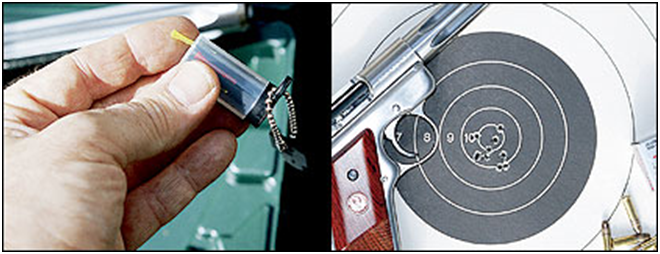
(Left) Six HiViz day-glo front-sight inserts come with the Ruger Mark III Hunter. Even on cloudy days the insert is readily seen. (Right) Shooting offhand, the author put these 10 rounds into an inch at 15 yards. The first five produced a 5/8-inch cluster. As with the Mark II, the bolt locks open after the last shot.



